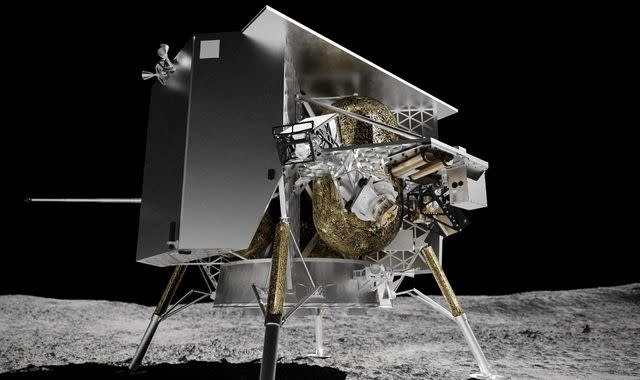
In a landmark event set to reignite lunar exploration, an American spacecraft, the ‘Peregrine’ lander developed by Pittsburgh-based company Astrobotic, is poised to embark on a mission to touch down on the Moon’s surface. If successful, this will mark the first US moon landing since the Apollo missions more than half a century ago.
Scheduled to launch at 2:18 a.m. ET on Monday, Peregrine is geared up to journey to the Moon’s mid-latitude region known as Sinus Viscositatis, or Bay of Stickiness, with an anticipated landing date of February 23. The spacecraft’s cargo is diverse and ambitious, encompassing a suite of scientific instruments and international payloads, including a notable assortment of artifacts and human remains.
Among the 20 experiments on board, Peregrine carries six NASA instruments designed to probe the lunar surface for water molecules, study radiation and gases around the lander, and analyze the lunar exosphere. Additionally, the craft includes a shoebox-sized rover from Carnegie Mellon University, a physical Bitcoin, and a collection of human remains and DNA samples, notably including those of renowned figures like Gene Roddenberry, creator of Star Trek, and Arthur C. Clarke, esteemed sci-fi author and scientist. Alongside these, a tribute extends to other personal mementos, artwork, and letters contributed by children worldwide.
The mission signifies a pivotal moment for Astrobotic, potentially establishing the company as the first private entity to achieve a controlled, ‘soft’ landing on the Moon. John Thornton, CEO of Astrobotic, expressed a mix of emotions, acknowledging the high stakes and anticipation surrounding the mission.
However, the Peregrine mission has not been without controversy. Concerns emerged due to some of the commercial payloads, particularly capsules carrying human remains. The Navajo Nation of Native Americans raised objections, urging NASA to postpone the launch. President Buu Nygren expressed deep concern about transforming the Moon into a resting place for human remains, citing its sacred significance in Navajo cosmology and the opposition from numerous tribal nations.
In response, NASA committed to consulting with tribes in the future on such matters, acknowledging the sensitivity and cultural significance attached to decisions involving celestial bodies.
As anticipation builds for this groundbreaking lunar mission, Peregrine stands as a testament to scientific exploration, carrying not just instruments to unravel lunar mysteries but also artifacts paying homage to human endeavors and aspirations, amid debates regarding the ethical considerations surrounding space exploration.
Sources By Agencies

